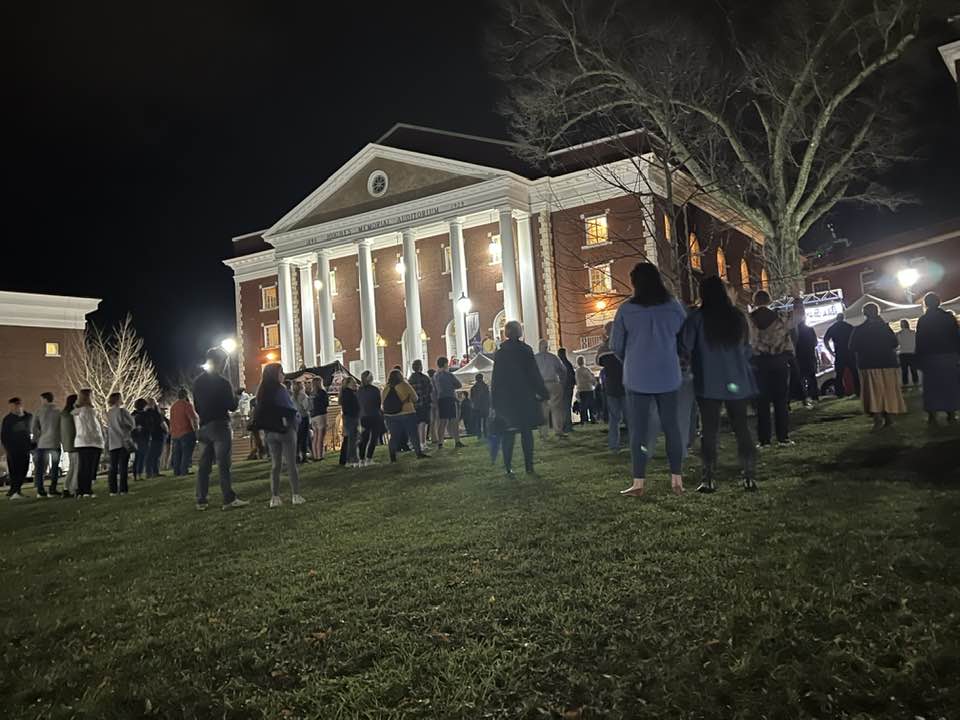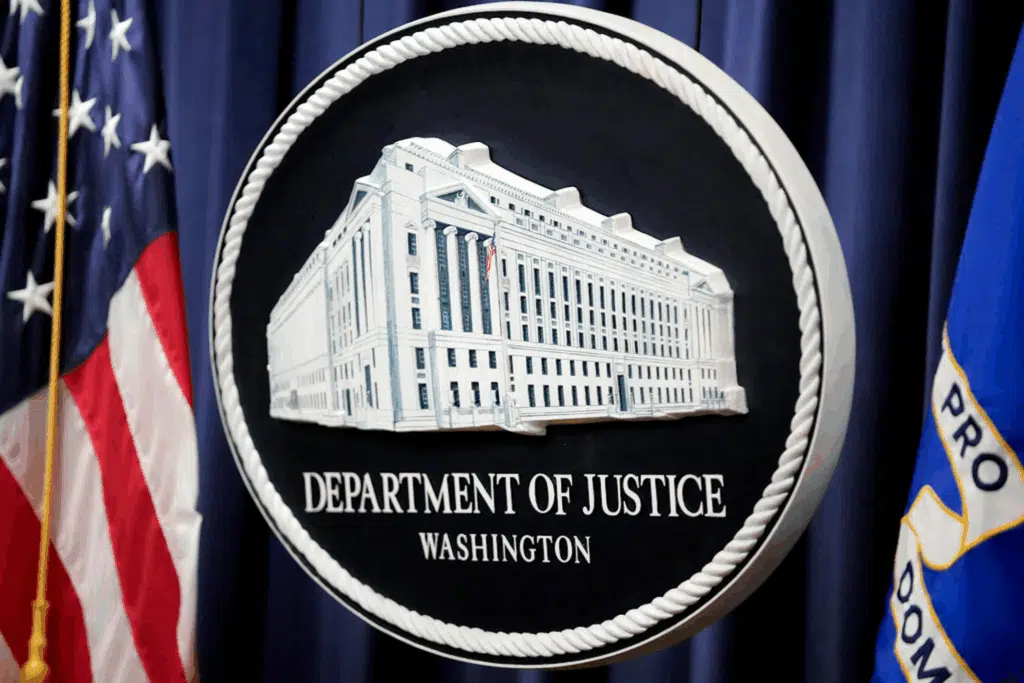
Asbury Awakening: Revival Or Rehash?
Although RVIVR typically covers a reviving of Americanism — which we call “Revivalism” in the political and cultural sense — there’s another kind of revivalism that needs mentioning here.
That’s the prayer and worship variety — the original “come to Jesus” meetings, if you will. Whether in white tents, church buildings, college chapels, or out in the open air, they’re part of our cultural DNA going back centuries.
It didn’t take long for social media to refer to an ongoing chapel service at Asbury University, which began on Feb. 8, as a “spontaneous outpouring” of God’s Spirit and to hail the return of a revival trend that will heal our land.
As a matter of fact, Asbury instantly recognized what it was, having been ground zero for many such ongoing worship rallies in the past, including 1950 and 1970 events — the latter of which is often considered one of the primary drivers of the ’70s Jesus Movement (more on that below). As it happens, this round started on the anniversary of the 1970 revival.
Former Vice President Mike Pence recently commented on his salvation experience at a 1978 Christian concert there when asked about the recent Asbury enthusiasm. Everyone’s talking about it.
A revival need not involve tambourine banging, miracle healings, or speaking in unknown tongues as is often portrayed in media of such Spirit-led gatherings. In Asbury’s case, it has been a rather calm affair, brought to us by an often-neglected and sometimes misunderstood stream of Evangelicalism (see more on that below, too).
GOD AND MAN AT ASBURY
Now into its second week, the Asbury chapel meetings have spread to overflow spaces in nearby buildings, including at adjacent Asbury Theological Seminary, and outdoor screens. Likeminded seminaries and Christian colleges have sent delegations and are now hosting similar meetings on their campuses. Visitors from across the country queue up for hours in cold weather to be seated — students with priority seating.
While being called “spontaneous” and even leader-less, chapel staff and student leaders have indeed controlled the stage and the seating policy, assuring that big name celebrities and media moguls do not capitalize on it. Asbury University has a page titled “outpouring” listing official info indicating that there is leadership present.
This development has led to opinions as wide as Christian theological differences tend to be. We’ll share a few here plus a couple of observations of our own.
From the Asbury University Collegian, in a student-written op-ed “Revival strikes Asbury once again,” written in hour 12:
“There have been moments of testimony, Scripture reading and prayer, private and public — whatever the Spirit felt like doing. Different leaders like chapel speaker Zach Meerkreebs and campus pastor Greg Haseloff worked to keep the day flowing as long as God intended it. Pizza, snacks, water and coffee rejuvenated the energy around dinner time and after the sunset.
“This experience is a true testament to show God’s timing. He knew when we as a student body and as a community needed a day like today. To confess, reconcile, heal and allow prayers to be spoken over us — He knew what we needed to do and helped us do it. He is still present even as I type these words; honestly, it is hard to describe everything I am feeling, much like my friends sitting around me. […]
“I have embraced friends, cried with strangers and overall felt more connected to God than I have in a long while. And I am only one person, one witness to healing and transformative action taking place on the carpets, against the walls, and between the wooden rows of seats.”
According to a statement from Asbury University President Dr. Kevin J. Brown, the development has represented some difficulties, especially as college classes are ongoing and not cancelled.
“[T]here is a tension I am trying to faithfully navigate at this time. … I humbly recognize we are experiencing a historic moment on our campus. Never in my life have I witnessed such manifest spiritual hunger—from our students to the nations—to humble ourselves and seek the Lord’s face. Books could be (and will be) written recounting the incredible stories and experiences of inspiring humility, altar consecration, neighborly love, and life-changing commitments. When I walk into Hughes Auditorium, I have a firsthand picture of the fruit of the Spirit.”
The Washington Post even took note, thanks in part to a swell of videos on Chinese-owned TikTok:
“The ongoing meetings in the chapel — which have none of the flashing lights, fog machines or other trappings that accompany many modern worship services — have also brought back memories of a similar revival in the 1970s, which is recounted in a video produced by the university.”
SKEPTICISM FROM FELLOW EVANGELICALS
Asbury University, though independent of any denomination, promotes what is known as a Wesleyan-Holiness doctrine. For those unfamiliar with that particular family of Christianity, they hearken back to the “Evangelical Awakening” spread by the hard work of Methodism founder John Wesley and his brother, famous hymn-writer Charles Wesley. They promote the importance of “entire sanctification” in the life of the Christian believer.
In the Wesleys’ day there was another key figure, George Whitefield, who maintained a more traditional and Calvinist approach to these things, and promoted a more predestinarian faith. A blog in the more Whitefieldian tradition, The Cripplegate, pointed out:
“Recently a chapel at Asbury university has resulted in what people are calling a revival. Many pastors and church leaders have been quick to call it a revival. Many pastors and church leaders have been quick to condemn what they refer to as ‘revival skeptics.’
“The fact of the matter is that you need time to be able to find out if what has taken place has been an actual revival or not. In fact, you would need years.
“Only God knows if a revival is taking place. These pastors can’t know. The skeptics can’t know. It is only God who can cause a revival and it is only God who can know if a revival is taking place. […]
“And the charlatans are coming and excited about what is going on. Which means that the Gospel isn’t preached. Repentance isn’t proclaimed. False teaching isn’t rebuked. There are no [official church] elders that will be held accountable for the souls of those present.”
However, those seeking the limelight have been summarily dismissed, including big name televangelists. Even media figures such as Tucker Carlson have been turned away from covering the event — a decision which he praised.
HOLY, BUT NOT HOLY ROLLERS
As the blog noted, the chapel service message that preceded the first hour of extended worship was led by a a young minister, Meerkreebs, from the conservative Christian & Missionary Alliance (C&MA) denomination. Aside from the tinkling of the ivories during a closing prayer and call to repentance, Meerkreeb’s sermon was nearly conversational in tone. Like his style, the Wesleyan-Holiness movement he’s from represents sort of a middle ground — not as didactic as a conservative Baptist church may be, and although equally excited about the baptism of the Holy Spirit, not nearly as demonstrative as Pentecostals or prone to shout (though that’s not unheard of, you won’t hear many raised voices at Asbury’s chapel services — even though Pentecostals sprang from the Holiness movement). Nor are they quietists focused more on the Inner Light, such as Quakers.
This Wesleyan-Holiness movement also owes much to the First and Second Great Awakenings which set up “altars” across the nation in the form of revival meetings inspired by the Wesleys and Whitfield’s methods. These indoor and outdoor rallies gave an altar (often a bench or rail located in front of the speaker’s platform) for the penitent to run toward and find hope and reconciliation with Christ. Their hard work broke down denominational, economic, racial, age, and gender divides, and led to not just a localized revival but an awakening that swept continents. The late Billy Graham‘s crusades were based on the flow of these historic meetings, as is the order of service in your average Evangelical church today.
That’s the Holiness movement you’ll find represented at Asbury. Traditionalists may find it not conservative enough. Charismatics might find it missing some kinetic energy. Liberals may consider their devotion to biblical moral standards to be needless navel-gazing.
Yet there about 12 million of these non-Charismatic Holiness people around the world — conservative Methodists, Nazarenes, independent Holiness churches, C&MA, and others. Though their ranks are stagnated in America, they were given a recent shot in the arm by a traditionalist schism in the United Methodist Church (more about that here in The Hayride). The movement has nevertheless had its mark on just about every denomination.
Understand these sons of John Wesley (including university namesake Francis Asbury) and you’ll better understand the heart of what’s going on at Asbury University. Read American religious history and you’ll see why these lengthy prayers at a college chapel’s altar are looked at as a great hope for the nation.
FIELD IS RIPE FOR HARVEST
From time to time, the cultural drift is felt so strongly, even among youth, that the crowds are ready to flock to an extended meeting such as the Brownsville Revival in Florida that lasted from 1995 to around 2000.
The time couldn’t be better here in 2023. Church attendance is at an all-time low after government COVID-19 responses all-but shut down many congregations. The number of religiously unaffiliated Americans is at an all-time high. From demonic imagery at the Grammy Awards to a new wave of the occult spreading through entertainment media, the faithful in Christ are ready to lift up their hands and seek renewal. And everyone else is at least curious.
Hollywood has noticed this trend, and there are several big productions which are focused on faith: “Jesus Revolution” featuring Kelsey Grammer and Jonathan Roumie, and produced by megachurch pastor Greg Laurie, is expected to draw the crowds. The movie will visit themes associated with the “Jesus Movement” of the early ’70s in Southern California (though an Asbury alumnus will quickly tell you that their alma mater was where it all started).
Roumie stars as Jesus himself in the streaming hit series “The Chosen,” which recently had a limited theatrical run crack the Top 10 of weekend releases. Even Netflix is jumping in on the craze with “Southern Gospel,” an upcoming romance flick that may or may not carry serious faith undertones. A recent “Left Behind” sequel was even a chance, even after lackluster box office results for the last installment that even Nicolas Cage couldn’t save.
The audiences are ready and the marketing machine is in place, which only fuels the fire of the Asbury awakening. At the very least, the social media algorithm is favoring the news.
FAITH AND FORM AT ODDS?
As a personal note as someone raised around the Wesleyan-Holiness movement, with a foot still firmly in it: There’s a bit of a conundrum between form and faith here.
In terms of faith: Wesleyans are the stalwarts of the Arminian free will tradition — “Draw near to God and he will draw near to you” (James 4:4) and that God “is not willing that any should perish but that all should come to repentance” (II Peter 3:9). Furthermore, God the Holy Spirit “convicts the world of sin and righteousness” (John 16:8). With those verses in mind, God is yearning for revival, not just at a Christian university chapel (though that’s an ideal spot for it to happen) but anywhere in which hearts are surrendering to him. And not just in America, either: some of the greatest growth has been in Africa and Asia in recent decades.
Now in terms of form: Wesleyan-Holiness types are very altar-centered. Many are packing bags to make the pilgrimage to rural Kentucky and Asbury University. Just as they might wait for Sunday morning to pour their hearts out at the end of a church service. Not that there’s anything wrong with that practice in and of itself, but this is their way, informed by the old “sawdust trail.”
Yet as the Great Awakenings have taught us, the revivals did not “spread” automatically or “pour out” randomly, but were preceded by many years of hard prayer, hard teaching, hard work, and many confrontations and hardships associated with confronting sin and wickedness head-on. “Hard” being the key factor, here.
I’ve come to believe that we’re the finicky ones, not God. The Lord yearns to revive our hearts on a mass level, but he knows whether or not we’re ready to handle it. Time will tell whether the Asbury revival will result in a greater awakening our word definitely needs, or whether it will be a years-long marathon such as the Brownsville Revival, a 24/7 prayer movement such as the controversial Kansas City Revival, or longer-lasting trend among churches. One Asbury prof is already calling for the revival to be made a private affair, and campus leaders are searching for a more suitable venue to host the thousands attending, if it’s to continue at all.
We’ll know if it’s a revival by the fruit it bears — those throwing rotten fruit at it best step aside and let God and the students at Asbury do their thing.
“Let us search and try our ways, and turn again unto the Lord” –Lamentations 3:40.



